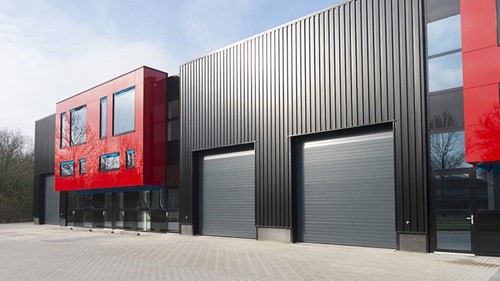Commercial property sales triple, but how do you invest in the sector?
Commercial property is becoming more mainstream and profitable by the day but how do you make a start and what is the best strategy to employ?
Commercial property is becoming more mainstream by the day as large numbers of new and existing commercial investors target the sector.
They are drawn to it due to superior cash-flow compared to residential property, good lending conditions and strong capital growth rates that are the envy of the world.
Commercial buyers agent Scott O’Neill takes a look at why commercial property investing might be a sensible investment option in 2022.
Commercial property can generate cash flow or help with savings for a home
House prices throughout Australia rose by a staggering 24.5 per cent in the year 2021, according to the 2022 Demographic International Housing Affordability report released recently.
Sydney is now officially the second least affordable city in which to buy a house, second only to Hong Kong.
Moving to another state is no solution either, with Melbourne, Adelaide, Brisbane and Perth all featuring into the top 20 least affordable cities in the world.
What’s clear is that we need to look beyond traditional investment strategies that have for so long permeated our psyche and towards a new Australian dream.
Enter commercial property, currently producing the highest yields seen in Australian real estate in more than a decade.
The numbers don’t lie and what they show is that the superior cash flow found in commercial has left residential in its wake.
In times of rising inflation and interest rates, commercial real estate can provide the returns needed in a third of the time of traditional investing.
So what if, instead of investing in residential, you invested $2.1m in commercial, offering a 7.5 per cent net return. With the tenant picking up most of the ongoing costs, such as council rates and maintenance, this investment would pay $157,500 per annum after costs.
If you took the traditional road and owned three residential properties worth $700,000 each, and they were all completely paid off, you would have $2.1m worth of property assets.
Sounds great, right? However, at a 4 per cent gross yield, your income on your debt-free property would only be about $60,000 per annum after council rates and water bills, insurance and maintenance costs have been taken into consideration.
You would also need to factor in income tax payable on your $60,000 rental income. For a portfolio worth $2.1m with no debt, $60,000 in gross pre-tax income in the current environment just doesn’t cut it.
Of course, income tax is still payable on the above commercial property profits, but if you’re comparing commercial with residential returns, there’s a clear winner here. By supercharging profits with commercial, there are options, whether purchasing the forever home, boosting savings or paying off an already existing mortgage sooner.
Access equity to invest and use cash flow to pay off your home
Those who are lucky enough to own their home have seen 30-50 per cent growth over the last few years, which equates to equity to purchase a commercial property.
For example, a couple named Steve and Clair purchased a $3,000,000 property in the Eastern Suburbs of Sydney five years ago. That property is now worth $5,800,000, so they have $2,800,000 worth of equity in their property. They used a line of credit to take out 70 per cent of that $2,800,000 which gave them access to a $1,960,000 deposit for a commercial property. This was used to purchase a $5,000,000 commercial property with this money.
| Commercial Purchase Price | $5,000,000.00 |
| Deposit - 30% | $1,500,000.00 |
| Stamp Duty | $250,000.00 |
| Building Report* | $800.00 |
| Solicitor Costs* | $8,500.00 |
| Valuation* | $3,000.00 |
| Total Cash Required | $1,762,300.00 |
| Purchase Price + Purchasing Costs | $5,262,300.00 |
| Net Annual Cash Flow Return | $300,000.00 |
| Net Yield on property | 6.00% |
| Net Yield on Property Accounting for the Purchasing Costs | 5.70% |
| Now - Let's Look at the Cash-on-Cash Return | |
| Deposit Needed = 30% + costs | $1,762,300.00 |
| Cost of loan (3% pa on 100% debt) | $150,000.00 |
| Cash flow after mortgage costs (including line of credit) | $150,000.00 |
They have created a $150,000 passive income after all costs just from re-deploying their equity into a commercial property.
Enter a joint venture with friends or family
This is becoming popular in recent times, with families joining forces to purchase higher value assets in order to purchase the best quality commercial property they can acquire.
As you spend more you are out-purchasing more investors, plus you are dealing with bigger, more well-known tenants as you move up into the higher price points.
You can often get better yields at higher price points or assets with more tenants to help spread the risk. If you can't afford to do this alone, banding together with people you trust might just be the solution.
Just make certain that you establish proper legal agreements from the start, as often investors' priories change over time and you don't want to be caught in the middle of an early sale.
DISCLAIMER: The information in this article does not take into account your individual objectives, financial situation or needs. We recommend that you obtain financial, legal and taxation advice before making any decision.




















